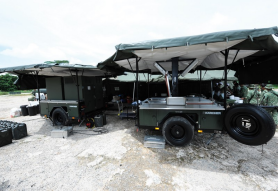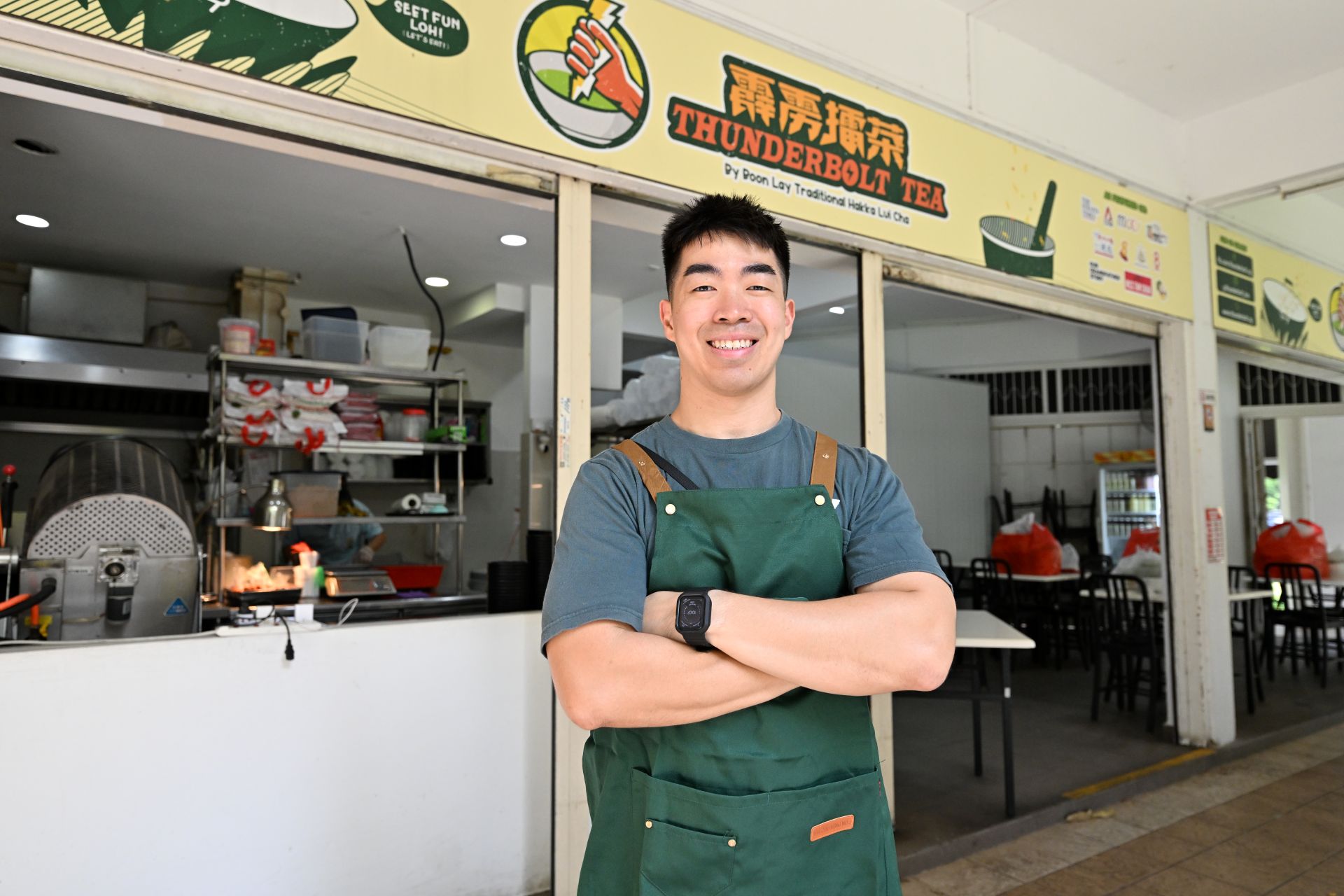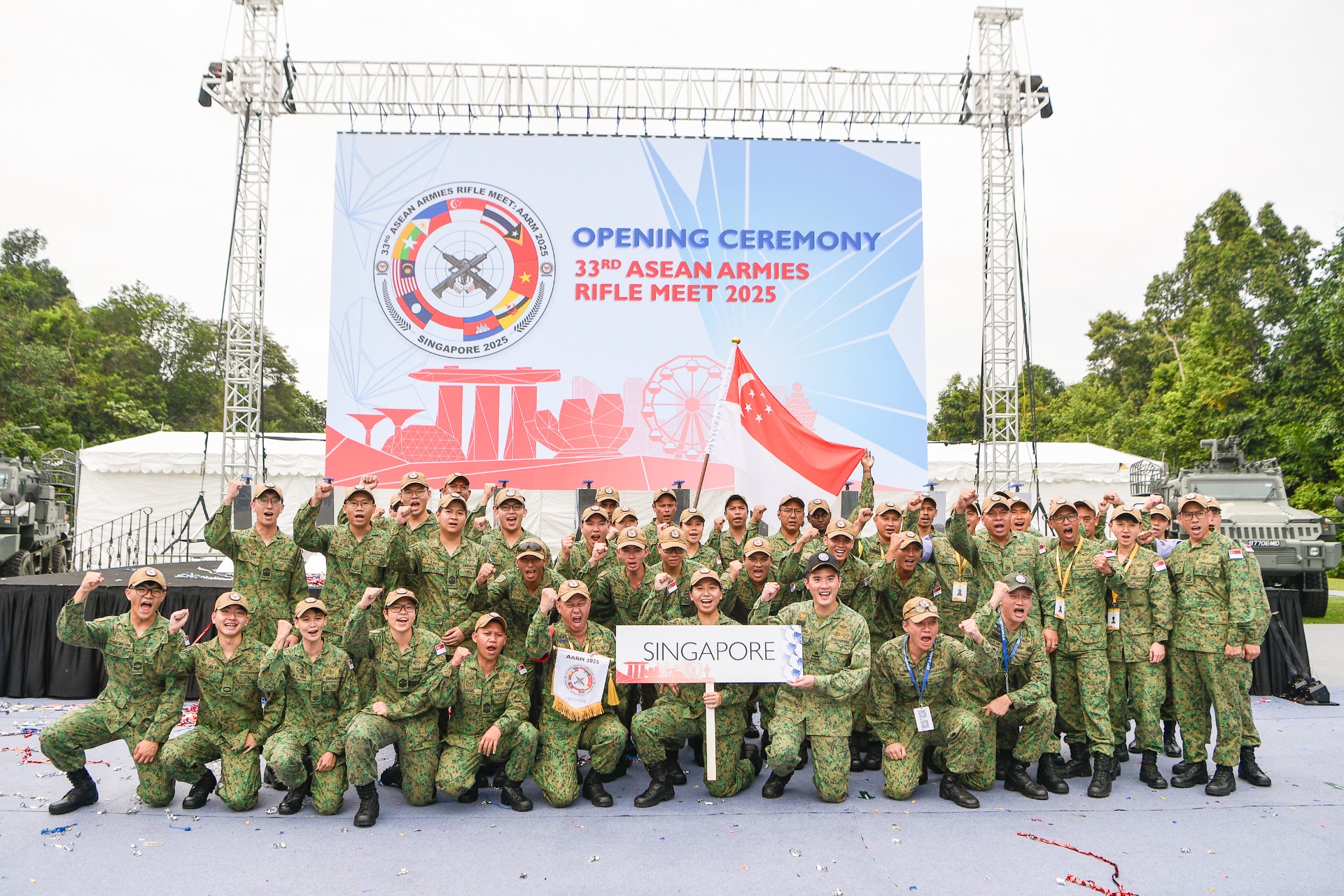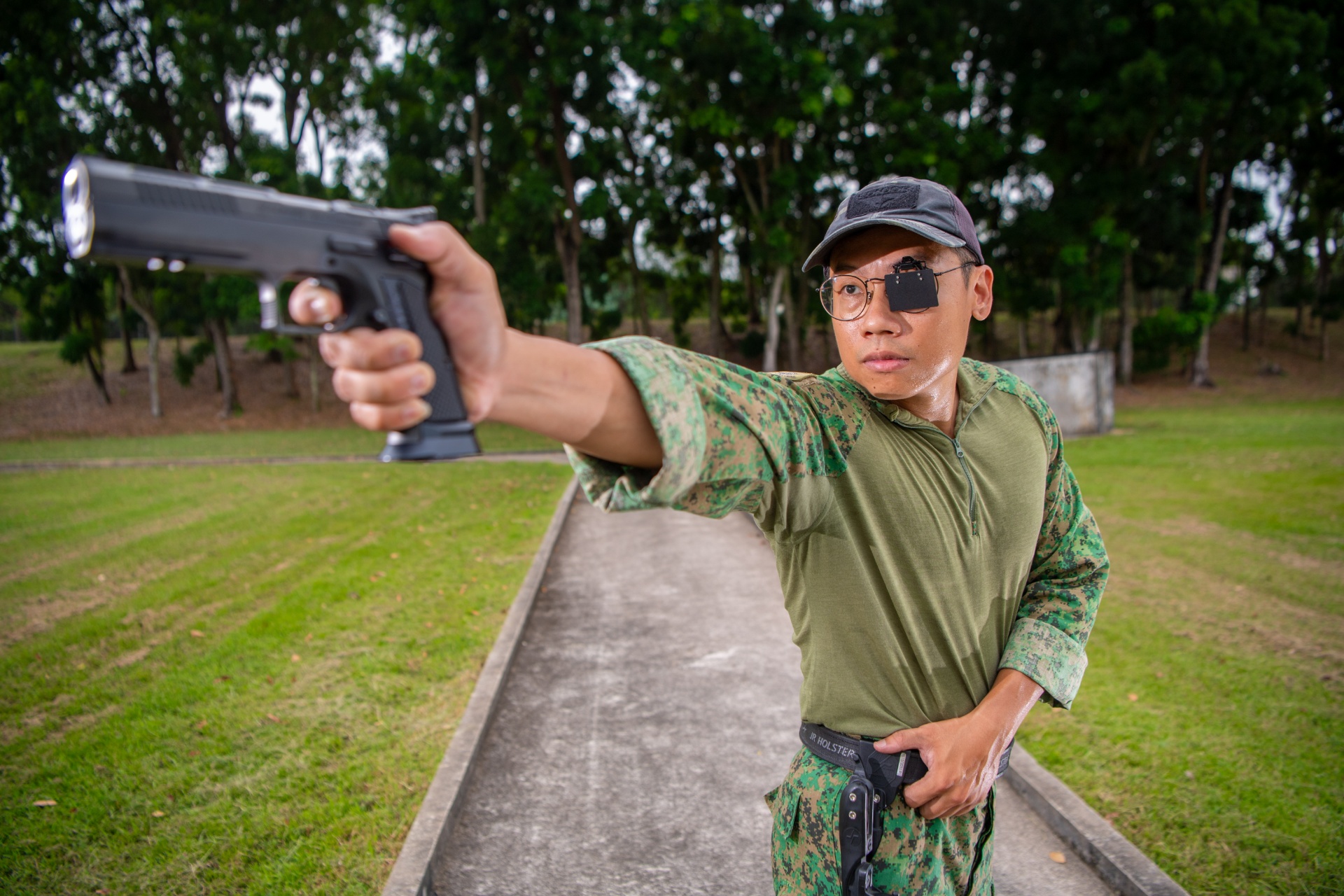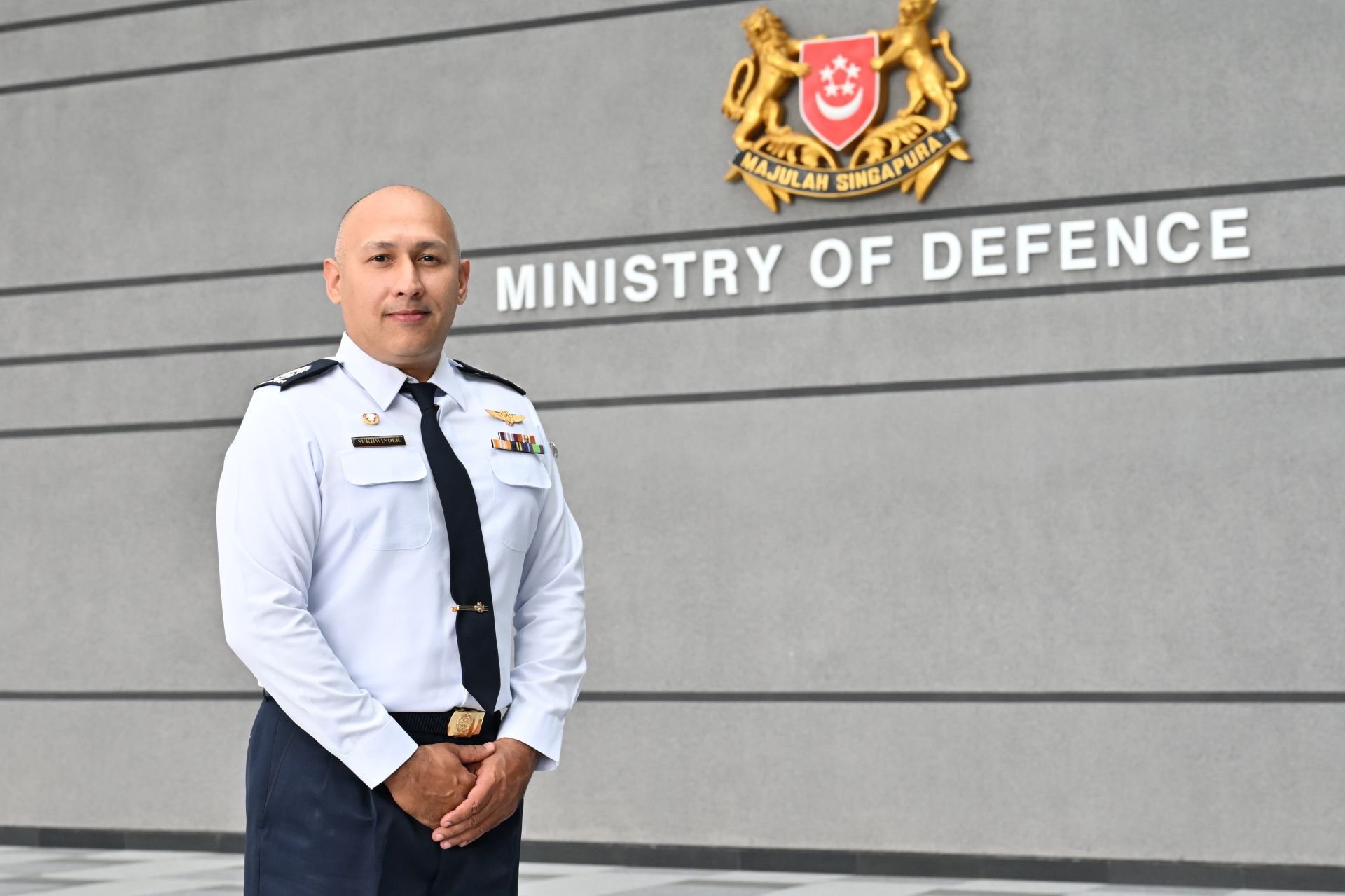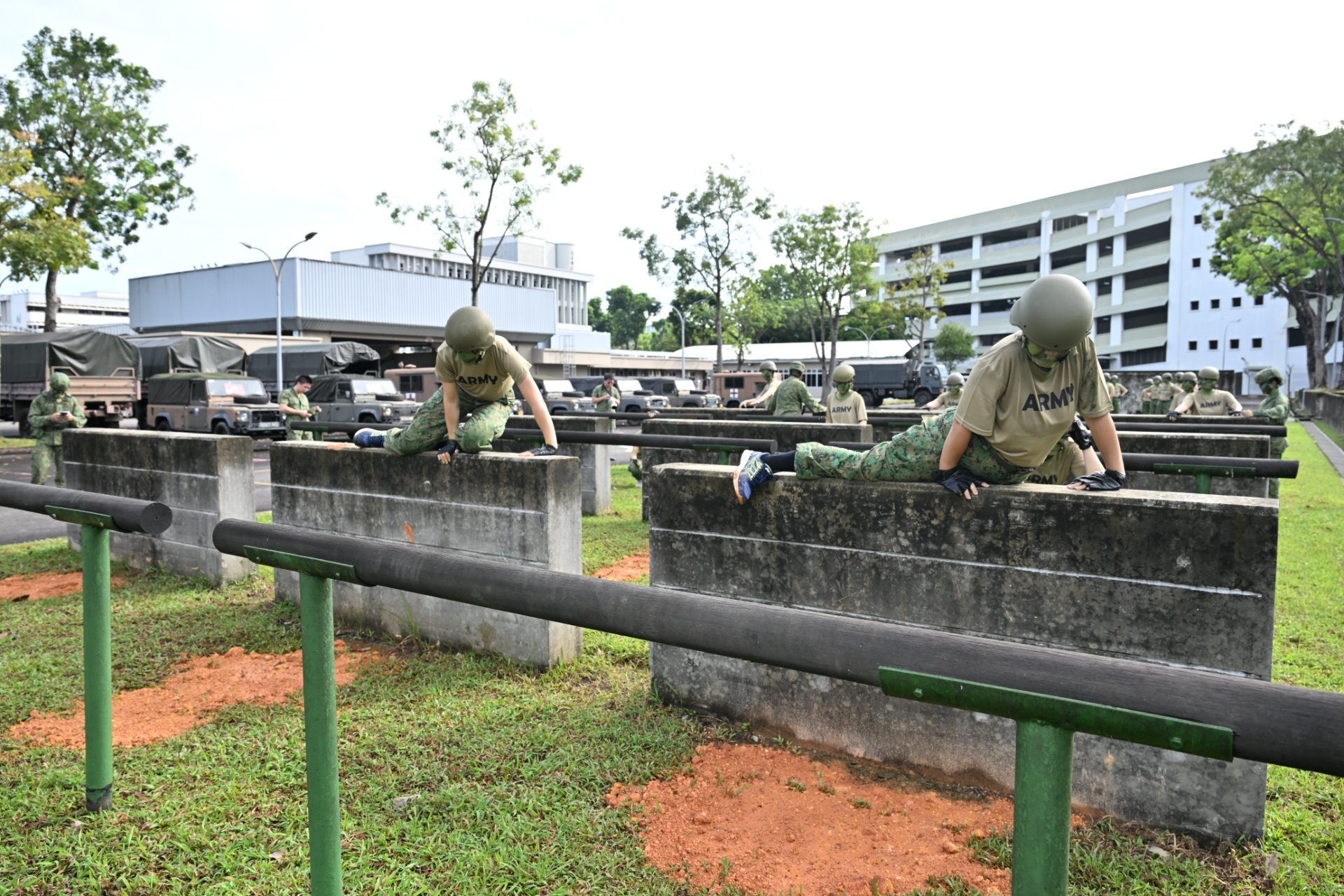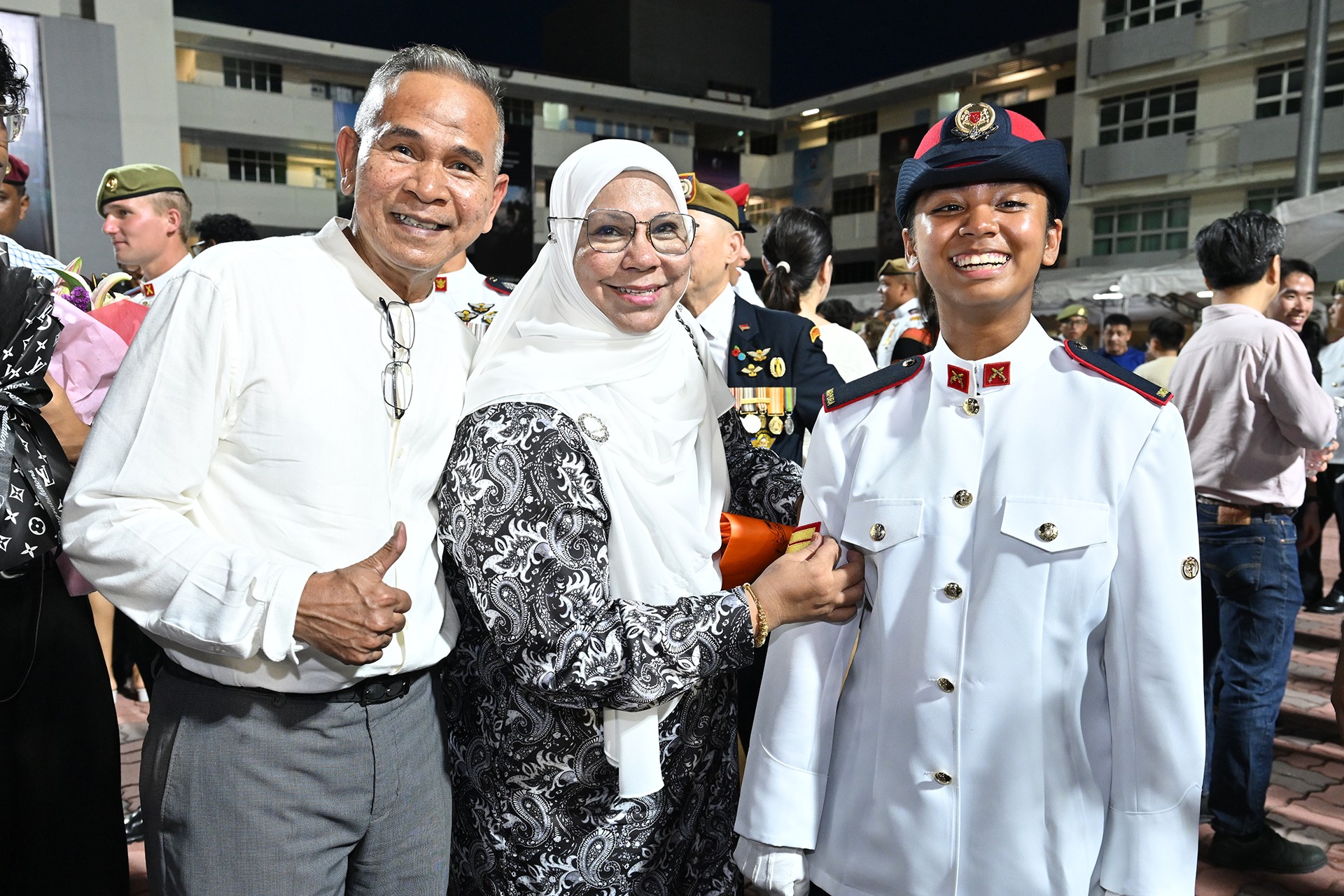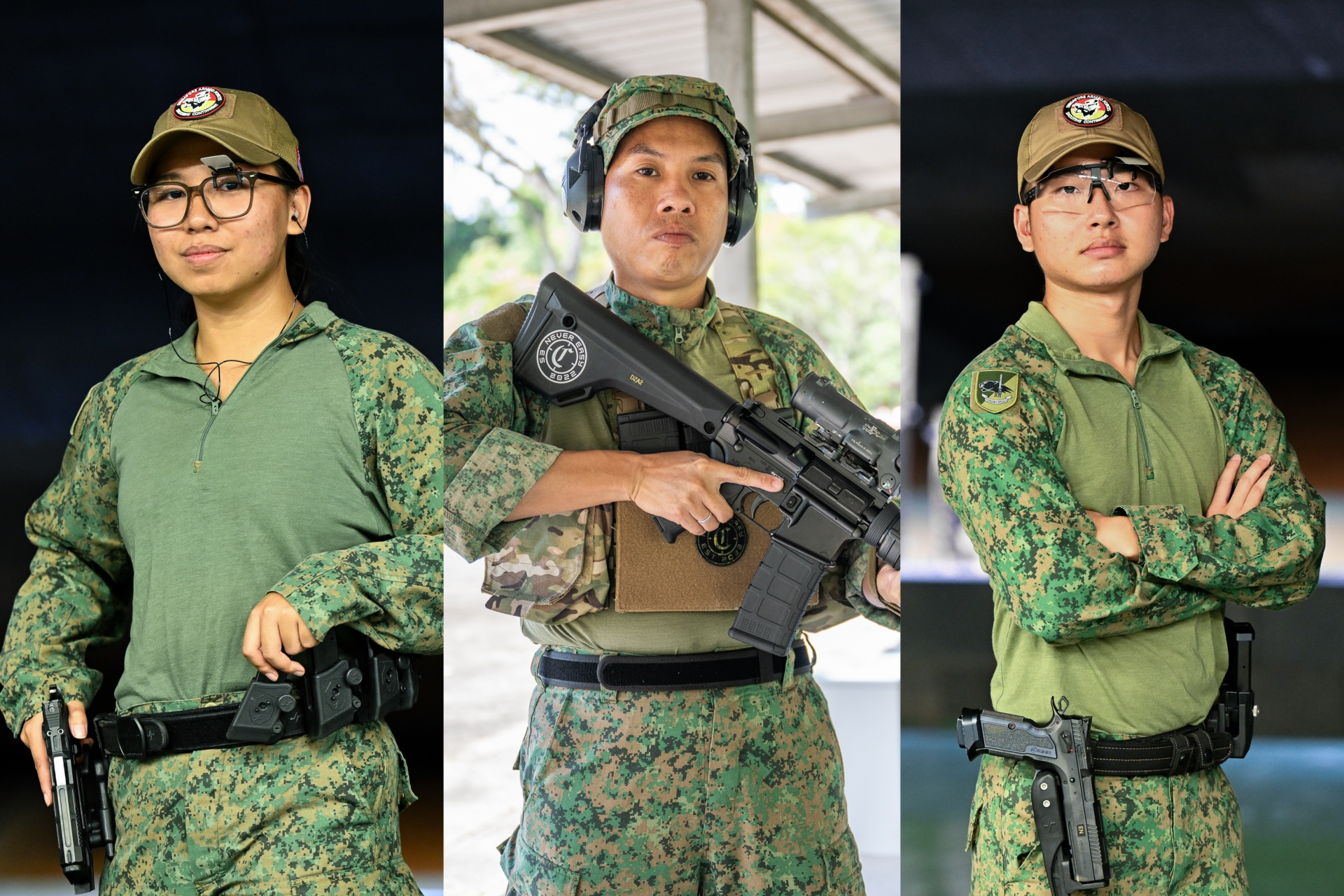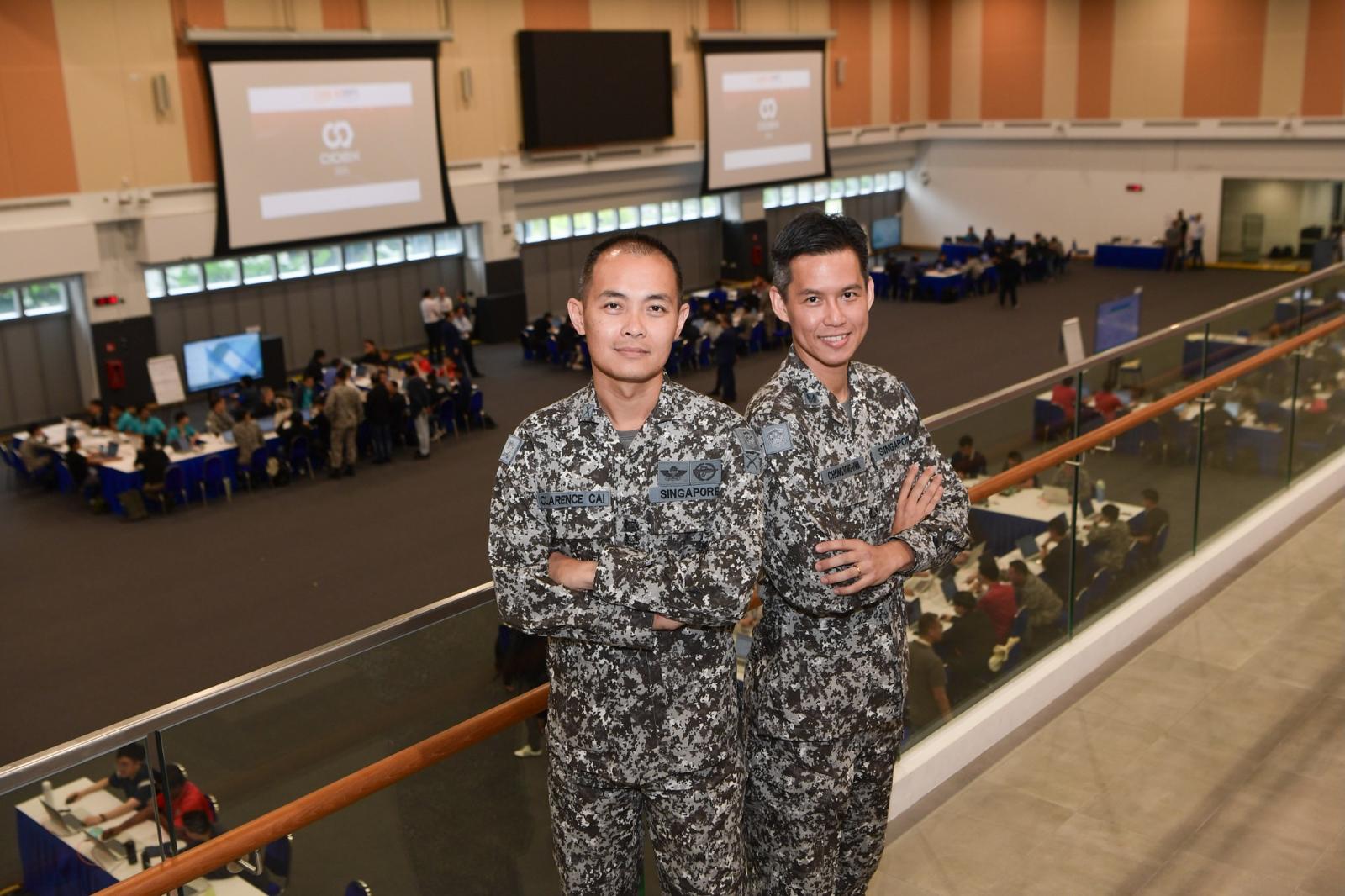EVERYDAY COMFORTS OUT IN THE FIELD
PHOTO // Chai Sian Liang
Nothing lifts the spirits of soldiers out on operations like hot food, showers and clean laundry, and these are exactly what the Mobile Field Unit is designed for.
An army on the move is not always all grit and grime, so say the soldiers of the Singapore Armed Forces (SAF) Combat Service Support Command. This is because they are the ones who operate the Mobile Field Unit which lets soldiers cook, clean and wash while they are out in the field for training or operations.
Designed by Karcher Futuretech, a leading German manufacturer of highly mobile, compact and customised system solutions, the unit comprises the Mobile Field Kitchen, Refrigerator, Sanitary Facilities and Laundry systems. These systems help to provide better food and hygiene for soldiers operating in areas beyond the amenities of military camps.
For components such as the field kitchen which require some assembly, all it takes are just two trained operators and about 30 minutes to get everything ready for use.
To keep up with the moving army, each of the four components of the Mobile Field Unit is designed to be towed easily by the ubiquitous SAF five-ton truck at speeds of up to 100kmh. They can also be transported via Landing Ship Tank over sea, or under-slung by a Chinook helicopter by air.
Speedy chow
With a crew of four, the mobile field kitchen can be used to whip up a simple meal for up to 300 personnel (or the size of one company) within two hours.
When used as a reheating platform for ready-packed food such as the SAF's field ration retort pouches (plastic and metal foil laminate pouches), it can produce enough food for about twice that number of soldiers.
The mobile field kitchen is equipped for basic cooking in the field and in large quantities. This is accomplished through a modular design, which allows cooking to be done on the trailer itself or on separate sub-units. It also allows chefs to use different cooking methods, from baking, boiling, braising and frying to roasting, steaming and stewing.
Instead of Liquefied Petroleum Gas (LPG) cylinders which are made for domestic use, the mobile field kitchen uses diesel to fuel its various cooking surfaces. Out in the field, using diesel burners has two advantages: Diesel is a common resource during outfield operations as it is used to power most SAF vehicles; and it is safer to use as it is a less volatile fuel compared to petrol and LPG.
If ever struck by gunfire, the diesel reservoirs in a field kitchen are unlikely to cause an explosion, minimising any risk to soldiers.
Frozen food
To ensure that there is a fresh supply of food, be it fruits, vegetables, meat or dairy products, the Mobile Field Unit comes with a Mobile Field Refrigerator which is also designed as a module that is easy to transport and remains fully functional while being transported.
The refrigeration module may look like commerical refrigerators, with each of its four sub-units having a capacity of 750 litres. What sets it above the rest is its ability to withstand extreme climates. Even if the temperature outside is a burning 50 degrees Celsius, the insulation built into the module allows it to maintain a cool -2 to -8 degrees Celsius inside.
Staying clean
After food and water, hygiene is possibly the next most important thing for an army on the move. While having a Mobile Sanitary Trailer throughout an operation would be impractical most of the time, the facilities are most welcomed when available.
As with other components of the Mobile Field Unit, the sanitary trailer is modular in design and purpose-built for military use. Comprising three shower cubicles, three toilet cubicles, two urinals and three wash basins, the trailer is made mostly of fibreglass with a special coating for easy cleaning. This special nano-coating is engineered to repel dirt, making it extremely easy to clean and disinfect the system.
In addition, the high level of insulation built into the walls greatly reduces the amount of condensation and, correspondingly, the formation of mould fungus.
The trailer is also built to withstand hard knocks and rough weather through the sandwich construction of its reinforced fibreglass roof and a self-supported platform with an anti-slip covering.
Servicemen can also enjoy hot water through a diesel-powered water heater.
Fresh clothes
A hot shower is meaningless if you do not have clean clothes to change into, and that is where the Mobile Field Laundry system comes in. Beside being built to withstand outfield conditions, the washing machine and dryer are designed to function continuously and independently at full capacity for extended periods.
Its high endurance is made possible by a highly-effective patented heating system that transfers heat directly into the washing machine and the dryer. Only one trained soldier is required to operate the system, which can process about 25kg of laundry every hour.
For all these reasons and more, the Mobile Field Unit is always a welcome sight for soldiers during operations.
